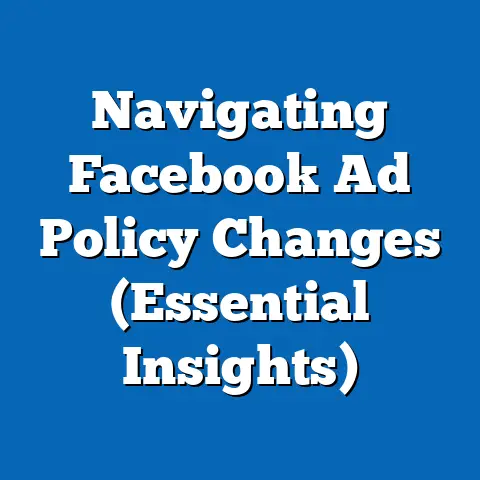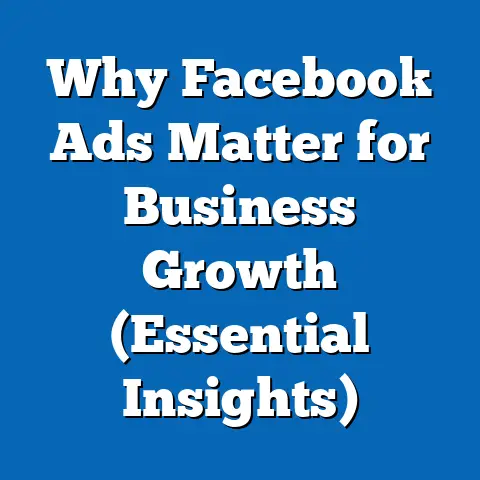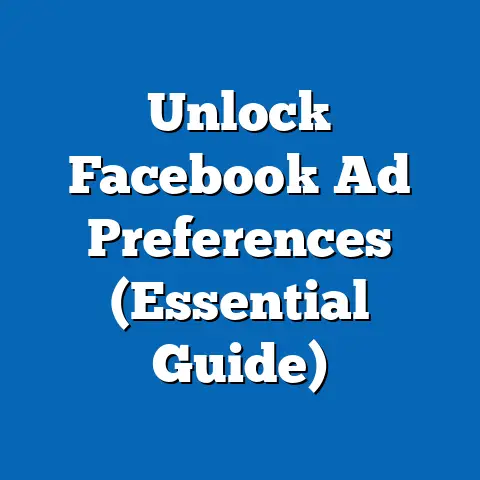Boost Chicken Wing Sales with Viral Facebook Ads (Expert Tips)
In the fast-paced world of digital marketing, one expert tip stands out for businesses looking to boost sales of niche products like chicken wings: crafting viral Facebook ads that resonate emotionally and culturally with target audiences. This strategy involves creating content that not only showcases the product but also taps into humor, nostalgia, or trending memes to spark engagement and shares. According to social media marketing expert Jane Carlson, “Viral ads are less about selling and more about storytelling—make your audience laugh, cry, or reminisce, and they’ll spread the word for you.”
This approach has deep roots in the evolution of advertising, particularly with the rise of social media platforms in the early 2000s, which transformed how brands connect with consumers. Historically, viral marketing gained prominence with campaigns like Old Spice’s “The Man Your Man Could Smell Like” in 2010, which leveraged humor and absurdity to garner millions of views and shares. Today, the societal implications of viral ads are significant—they can redefine brand identity, influence consumer behavior across generations, and even shape cultural trends, especially in food industries like chicken wings, where community and shared experiences are key selling points.
The Rise of Viral Facebook Ads: A Historical and Technological Context
The concept of viral marketing predates social media, with word-of-mouth campaigns dating back to the early 20th century. However, the advent of platforms like Facebook in 2004 revolutionized the speed and scale at which content could spread. By 2012, Facebook had over a billion users, making it a goldmine for advertisers seeking mass reach with minimal investment compared to traditional media.
Technologically, the platform’s algorithm prioritizes content that generates high engagement—likes, comments, and shares—meaning ads with emotional or entertaining elements often outperform straightforward sales pitches. For chicken wing businesses, this presents an opportunity to create content around game-day traditions, family gatherings, or spicy food challenges, which naturally encourage interaction. Data from Sprout Social (2022) shows that 64% of consumers are more likely to purchase from a brand after seeing a video that entertains or educates them, underscoring the power of creative storytelling.
Economically, viral ads level the playing field for small businesses, including local wing joints, by offering low-cost exposure compared to expensive TV or print campaigns. Socially, they foster a sense of community by encouraging user-generated content, such as fans sharing their wing-eating experiences. However, the challenge lies in crafting content that feels authentic rather than forced—a misstep can lead to backlash, as seen in failed viral attempts that come off as tone-deaf or overly commercial.
Generational Dynamics in Food Marketing: Understanding the Audience
To maximize the impact of viral Facebook ads for chicken wings, marketers must understand the generational cohorts they are targeting. Each generation—Baby Boomers, Gen X, Millennials, and Gen Z—has unique characteristics shaped by historical events, technological advancements, and cultural shifts. Below, we analyze these groups, their relationship with food culture and social media, and how to tailor ads to their preferences, while avoiding stereotypes and recognizing diversity within each cohort.
Baby Boomers (Born 1946–1964): Nostalgia and Tradition
Baby Boomers, now aged 59 to 77, grew up in a post-World War II era of economic prosperity and traditional family values. Their formative years were marked by the rise of television advertising and iconic food brands, shaping a preference for familiarity and trust in marketing. Many associate chicken wings with social gatherings like Super Bowl parties, a tradition that began gaining traction in the 1960s with the invention of Buffalo wings in 1964 at Anchor Bar in Buffalo, New York.
For Boomers, viral Facebook ads should lean on nostalgia—think retro visuals, classic jingles, or references to shared cultural moments. A 2021 AARP survey found that 68% of Boomers use Facebook regularly, often to connect with family, making family-oriented or community-focused wing ads particularly effective. However, they are less likely to engage with overly trendy or meme-heavy content, preferring straightforward messaging about quality and value.
Societally, targeting Boomers with viral ads can reinforce their role as influencers in family purchasing decisions, as many are grandparents who buy food for younger generations. Yet, marketers must avoid assuming all Boomers are tech-averse—many are active online and appreciate humor or lighthearted content, provided it aligns with their values.
Generation X (Born 1965–1980): Pragmatism and Independence
Gen X, aged 43 to 58, is often called the “forgotten generation,” sandwiched between Boomers and Millennials. Shaped by economic uncertainty, the rise of cable TV, and early internet adoption, they value independence and skepticism toward overt marketing. They witnessed the popularization of chicken wings as bar food in the 1980s and 1990s, often associating them with casual, no-frills socializing.
For Gen X, viral ads on Facebook should focus on authenticity and humor that pokes fun at everyday life—think self-deprecating memes about parenting or work stress paired with wing deals. According to eMarketer (2023), 72% of Gen X uses Facebook, often for practical purposes like finding local deals, so ads with clear calls-to-action (e.g., limited-time offers) perform well. Avoid overly polished or “try-hard” content, as this generation values brands that feel genuine.
In the workplace and society, Gen X often acts as a bridge between older and younger generations, making them key decision-makers for family meals. Viral ads that position chicken wings as a convenient, crowd-pleasing option can resonate, but marketers should recognize their diversity—many Gen Xers are health-conscious or culturally varied in food preferences.
Millennials (Born 1981–1996): Experience and Social Connection
Millennials, now aged 27 to 42, came of age during the internet boom and the 2008 financial crisis, shaping their focus on experiences over material goods and a deep reliance on social media. They view food, including chicken wings, as a social currency—think Instagram-worthy wing platters or viral food challenges. This generation helped popularize foodie culture, with many seeking unique flavors or artisanal takes on classics.
Viral Facebook ads targeting Millennials should prioritize visually striking content and interactive elements, like polls asking, “What’s your go-to wing sauce?” A 2022 Pew Research study found that 84% of Millennials use Facebook, often to share life updates or discover trends, so ads that encourage tagging friends or sharing recipes can go viral. Collaborations with influencers or user-generated content campaigns also resonate strongly.
Societally, Millennials drive food trends and value brands with social responsibility—ads highlighting sustainable sourcing or community initiatives can boost engagement. However, this generation spans a wide range of life stages (from young parents to single professionals), so segmentation is key to avoid alienating subgroups with mismatched messaging.
Generation Z (Born 1997–2012): Digital Natives and Trendsetters
Gen Z, aged 11 to 26, is the first fully digital-native generation, shaped by smartphones, social media, and global crises like climate change and the COVID-19 pandemic. They see chicken wings as both a comfort food and a canvas for viral trends—think TikTok challenges involving extreme spice levels or creative dipping sauces. Their humor is often absurd or ironic, influenced by internet culture.
For Gen Z, viral Facebook ads must be fast-paced, meme-driven, and cross-platform, often directing users to TikTok or Instagram for full impact. A 2023 Morning Consult report notes that while only 58% of Gen Z uses Facebook regularly, they engage with brands that feel relatable and “in on the joke.” Ads with quirky animations or references to pop culture moments (e.g., a viral dance paired with wing-eating) can capture attention.
Culturally, Gen Z values inclusivity and authenticity—ads that feature diverse representation or align with social causes can build loyalty. However, their short attention spans and skepticism toward traditional advertising mean brands must be subtle and entertaining, avoiding overt sales pitches. Their influence on food trends also impacts older generations, making them key drivers of viral phenomena.
Crafting Viral Facebook Ads for Chicken Wing Sales: Expert Strategies
With generational insights in mind, let’s explore actionable tips for creating viral Facebook ads to boost chicken wing sales. These strategies combine creativity, data-driven targeting, and cultural relevance to maximize impact across diverse audiences. Each tip is grounded in research and real-world examples, ensuring practical application for businesses of all sizes.
1. Leverage Emotional Storytelling with a Generational Twist
Emotion is the cornerstone of viral content—ads that evoke laughter, nostalgia, or relatability are more likely to be shared. For chicken wings, focus on stories of connection, such as friends bonding over a game or families reuniting over a shared meal. Tailor the narrative to generational values: Boomers might respond to a throwback to 1970s Super Bowl parties, while Gen Z might engage with a humorous take on a viral internet challenge.
A 2021 study by Unruly found that emotional ads are twice as likely to be shared, with humor and inspiration topping the list. For example, a local wing chain could create a video ad showing a multigenerational family arguing playfully over the last wing, with captions like “Who gets the last bite? Tag your wing rival!” This universal theme bridges generational gaps while encouraging interaction.
2. Utilize User-Generated Content and Challenges
Encouraging customers to create and share content about their chicken wing experiences can amplify reach organically. Launch a Facebook challenge, such as a “Spiciest Wing Challenge,” where fans post videos of themselves trying your hottest flavor for a chance to win free wings. This tactic works particularly well with Millennials and Gen Z, who thrive on social validation and peer interaction.
Data from Stackla (2022) shows that 79% of consumers trust user-generated content over branded ads, making it a powerful tool for authenticity. Promote submissions on your page, and consider cross-posting top entries to Instagram or TikTok for added virality. Ensure the challenge aligns with your brand—local businesses can highlight community pride, while larger chains might focus on nationwide participation.
3. Tap into Trends and Memes with Timely Content
Timing is everything in viral marketing—ads that reference current events, holidays, or internet memes can ride waves of online buzz. For chicken wings, tie campaigns to major sporting events like the Super Bowl or cultural moments like National Chicken Wing Day (July 29). Generational humor matters here: Gen X might appreciate a sarcastic take on game-day stress, while Gen Z could engage with a trending TikTok sound overlaid on wing footage.
A 2023 report by Hootsuite emphasizes that 52% of viral content leverages trending topics within 48 hours of their peak. Monitor Facebook and Twitter trends to stay relevant, but avoid forcing connections that feel inauthentic—relevance must align with your brand voice. A misstep, like using a serious social issue for humor, can alienate audiences across generations.
4. Optimize for Visual Impact and Mobile Viewing
Facebook ads must grab attention within seconds, especially since 85% of users watch videos without sound (Digiday, 2022). For chicken wing ads, prioritize high-quality visuals—think close-ups of sizzling wings with vibrant sauces, paired with bold text overlays like “Craving This?” Design for mobile-first viewing, as most generational cohorts, especially Millennials and Gen Z, access Facebook via smartphones.
Incorporate animation or stop-motion for added flair, particularly for younger audiences who favor dynamic content. Test different formats (carousel ads, short videos, polls) to see what drives engagement, using Facebook Insights to refine targeting by age, location, and interests. Visual consistency also builds brand recognition, crucial for small businesses competing with larger chains.
5. Segment Audiences for Personalized Targeting
Facebook’s advertising tools allow precise segmentation by demographics, interests, and behaviors, enabling tailored campaigns for each generation. Create separate ad sets for Boomers (emphasizing tradition and deals), Gen X (focusing on convenience), Millennials (highlighting experiences), and Gen Z (using humor and trends). Personalization increases relevance—HubSpot (2023) reports that segmented campaigns see 30% higher click-through rates.
For example, a wing restaurant could run a “Family Pack Deal” ad for Boomers and Gen X during dinner hours, while pushing a “Late-Night Wing Craving” challenge for Millennials and Gen Z after 9 PM. Retargeting past customers with personalized offers (e.g., “Missed our wings? Get 10% off!”) also boosts conversions across all age groups. However, over-segmentation can strain budgets, so prioritize high-impact cohorts based on your customer base.
Societal and Economic Implications of Viral Wing Campaigns
The ripple effects of viral Facebook ads extend beyond immediate sales, influencing food culture, consumer behavior, and industry trends across generations. Socially, these campaigns can redefine chicken wings as not just a snack but a cultural touchstone, much like pizza or burgers. They foster community engagement by encouraging shared experiences—whether through family gatherings for Boomers or online challenges for Gen Z—reinforcing food’s role as a unifier.
Economically, viral ads can disrupt traditional marketing budgets, allowing small wing businesses to compete with national chains through creativity rather than capital. A single viral campaign can drive exponential growth—consider how Wingstop’s social media presence helped it expand from a regional player to a global brand in the 2010s. However, this democratization also increases competition, as every business vies for viral attention, potentially saturating audiences and reducing impact over time.
In the workplace, viral campaigns influence how food businesses operate, pushing for faster digital adoption among staff and management, even in older generations less familiar with tech. Culturally, they shape generational food preferences—Gen Z’s viral challenges may popularize exotic wing flavors, while Boomer-driven nostalgia could revive classic recipes. Yet, there’s a risk of cultural insensitivity if ads misappropriate trends or fail to represent diverse audiences, a concern given the global reach of platforms like Facebook.
Challenges and Ethical Considerations
While viral Facebook ads offer immense potential, they come with challenges that marketers must navigate. First, virality is unpredictable—content that resonates with one generation may flop with another, or worse, offend. A 2022 incident involving a fast-food chain’s tone-deaf meme ad led to a 15% drop in engagement, highlighting the risks of misjudging cultural context.
Second, over-reliance on viral tactics can erode brand trust if campaigns feel gimmicky or detached from core values. Boomers and Gen X, in particular, may view excessive trend-chasing as inauthentic, while younger generations might criticize brands for exploiting memes without crediting creators. Ethical considerations also arise in targeting—overly aggressive retargeting or data collection can alienate privacy-conscious users, especially Millennials and Gen Z.
Finally, the environmental impact of viral food campaigns shouldn’t be ignored. Increased demand for chicken wings can strain supply chains or exacerbate sustainability issues in poultry farming, a concern for socially aware generations. Brands must balance profit motives with responsibility, perhaps by highlighting eco-friendly practices in ads to appeal to value-driven consumers.
Forward-Looking Insights: The Future of Viral Marketing for Chicken Wings
As social media evolves, so will the strategies for viral Facebook ads in the food industry. Emerging technologies like augmented reality (AR) could allow users to “try” wing flavors virtually, appealing to tech-savvy Gen Z and younger Millennials. Cross-platform integration will also grow—Facebook ads may serve as entry points to immersive TikTok or Instagram experiences, catering to shifting generational platform preferences.
Economically, the rise of micro-influencers (those with smaller, niche followings) offers cost-effective partnerships for wing businesses, especially for targeting specific generational or cultural subgroups. Societally, as generational lines blur with shared digital spaces, hybrid campaigns that blend nostalgia with modern humor could unite diverse audiences over a love for chicken wings. However, uncertainties remain—algorithm changes, platform fatigue, or economic downturns could dampen viral potential, requiring marketers to stay agile.
In conclusion, boosting chicken wing sales with viral Facebook ads demands a nuanced understanding of generational dynamics, cultural trends, and digital tools. By crafting emotionally resonant, generationally tailored content, businesses can drive engagement and sales while contributing to broader food culture. The future holds exciting possibilities, but success will hinge on authenticity, adaptability, and a commitment to connecting with consumers across age and experience. As the digital landscape shifts, one thing remains clear: a well-told story, paired with a plate of wings, can still bring people together—virtually or otherwise.






